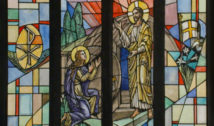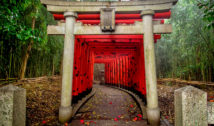Prime Minister of Japan will Take G7 Leaders to the Renowned Shinto Shrine at Ise
- By C Barnett --
- 22 May 2016 --
Shinzo Abe and G7 leaders will visit the Ise Shrine during summit being held in Japan this week.
Japan is all set to host the 42nd G7 summit to be held on 26–27 May, at the Shima Kanko Hotel, Kashiko Island, Mie Prefecture, Shima, Japan. It has been confirmed by the Japanese government sources that the seven world leaders attending the summit would be given a tour of the host country's most prestigious Shinto Shrine, by the host leader himself, Shinzo Abe, the Prime Minister of Japan.
Prime Minister of Japan will Take G7 Leaders to the Renowned Shinto Shrine at Ise.[/tweetthis]
According to Mr. Abe, the Shinto Shrine is the most suitable place to get in touch with the Japanese spirit. The Ise-Shima region, also called as the Shima Peninsula, is considered as the spiritual home of Japan by many. That is the main reason why this area was selected for the summit.
The Prime Minister is very excited and eager about showing the Shrine to the leaders from Canada, France, Germany, Italy, Britain, America and the European Union. Last year, when he announced the venue for the 2016 G7 summit, he expressed his hope about the world leaders participating in the summit, visiting the shrine to share its imposing and solemn atmosphere.
As per his plan, Mr. Abe would welcome his G-7 peers on the morning of May 26, at a bridge that leads to the inner shrine dedicated to the sun goddess Amaterasu Omikami. The world leaders, along with their spouses, may also visit areas that are not usually open to the public. The Shrine office has announced that the Inner Shrine would not be open to the public between 5 a.m. and 1 p.m. on May 26.
According to the Japanese government, they have organized the tour/visit/event in such a way that it would not blend politics and religion. However, some religious leaders are still skeptical about the world leaders visiting the Shrine. According to them, the visit conflicts with the principle of the separation of state and religion.
Yorio Fujimoto, a Kokugakuin University professor specializing in the history of government and religion, says that, if the visit is presented as an aspect of Japanese culture, like a study tour, it would help to avoid any controversies. As an international ceremony, the world leaders experiencing the traditional culture of Japan is an event to welcome.
According to Fujimoto, Article 20 of the Constitution would be violated only if a specific religion is introduced as Japanese culture.
For Motoki Nakamura, a souvenir shop owner whose shop is located in the town in front of the Inner Shrine, this event means an opportunity to gain name recognition, which essentially means more tourists.



















